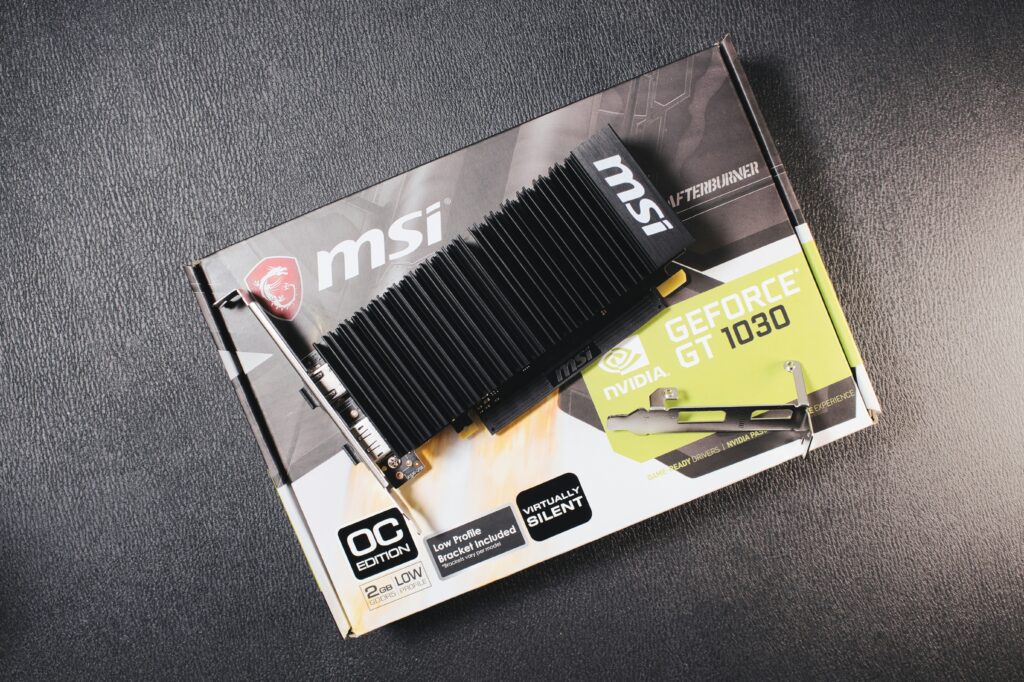How Can You Improve Gaming Performance On A PC? 1
Are you looking to take your PC gaming experience to the next level? In “How Can You Improve Gaming Performance On A PC?”, you’ll discover practical tips and tricks to optimize your system for smoother, faster gameplay. From upgrading hardware components like your graphics card and RAM to tweaking in-game settings and performing essential maintenance, this guide covers all the bases to ensure you get the most out of your gaming rig. Dive in and learn how these adjustments can significantly enhance your performance, making every game more immersive and enjoyable. How can you improve gaming performance on a PC? If you’ve ever found yourself lost in the heat of battle only to be derailed by a frame rate drop, or if you’ve ever experienced lag at a crucial moment, you know how important smooth and fluid performance is when gaming on a PC. Improving your gaming experience isn’t just about upgrading hardware; there are myriad ways to tweak settings and optimize performance. Dive in with us to discover how you can take your gaming rig to the next level.

Understanding Gaming Performance
Before we dive into specific steps, it’s important to understand what we mean by “gaming performance.” At its core, it refers to how well your system can run games at a high frame rate, high resolution, and with detailed graphics. It’s influenced by several key components and settings on your PC.
Frame Rate
The frame rate, measured in frames per second (FPS), is critical. A higher FPS means smoother gameplay and faster response times. Aiming for at least 60 FPS is ideal for most games, though higher frame rates can be beneficial for competitive titles.
Graphics Quality
Quality settings in games include texture details, lighting effects, shadows, and other visual effects. Higher settings provide better visuals but demand more from your system.
Latency
Latency, or lag, is the delay between a user’s action and the game’s response. Lower latency results in more responsive gameplay, which is crucial in fast-paced games.
Optimizing Hardware for Better Performance
Upgrading and optimizing your hardware can have a significant impact on gaming performance. Below, you’ll find some essential steps and considerations.
Upgrading Your GPU
Your Graphics Processing Unit (GPU) is the heart of gaming performance. If your current GPU isn’t up to par, upgrading it can yield considerable performance improvements.
Choosing the Right GPU
Not all GPUs are created equal. Nvidia and AMD are the two primary manufacturers. Determine which GPU will suit your needs by analyzing benchmarks and reviews that compare performance across different games and settings.
Comparison Table: Nvidia vs AMD GPUs
| Feature | Nvidia GPUs | AMD GPUs |
|---|---|---|
| Performance | Generally high | Competitive at similar price points |
| Ray Tracing | Advanced | Improving |
| Software Ecosystem | Robust (DLSS, G-Sync) | Good (Freesync, FSR) |
| Price | Often higher | Competitive, sometimes lower |
Upgrading Your CPU
The Central Processing Unit (CPU) handles many tasks, including game AI and physics calculations. An outdated or underperforming CPU can bottleneck your GPU, leading to poor performance.
Choosing the Right CPU
Look for a CPU with a high clock speed and multiple cores. The Intel Core series and AMD Ryzen series are excellent starting points. Compare the specific needs of your favorite games, as some benefit from higher clock speeds, while others leverage multiple cores more effectively.
Memory (RAM)
Having adequate RAM is crucial for smooth gaming performance. Most modern games require at least 8GB of RAM, but 16GB is recommended for optimal performance.
Upgrading RAM
Upgrading your RAM is relatively simple. Ensure your motherboard supports the new RAM, and consider faster RAM speeds for a slight performance boost.
Storage Solutions
Consider moving your games from a traditional Hard Disk Drive (HDD) to a Solid State Drive (SSD). SSDs provide faster load times and smoother performance.
Optimizing Software for Better Performance
Beyond hardware, software optimizations can make a noticeable difference. Here are some key areas to focus on.
Updating Drivers
Keeping your drivers (especially your GPU drivers) up-to-date ensures you’re benefiting from the latest performance enhancements and bug fixes.
How to Update Drivers
Both Nvidia and AMD regularly release driver updates. You can use software like GeForce Experience (Nvidia) or Radeon Software (AMD) to simplify this process.
Adjusting In-Game Settings
Tweaking in-game settings allows you to balance performance and visuals to your preference. Here’s a rundown of key settings to consider:
In-Game Settings Optimization
| Setting | Impact on Performance | Recommendation |
|---|---|---|
| Resolution | High | 1080p for balance, 1440p+ for quality |
| Texture Quality | Medium | Medium to High, depending on VRAM |
| Shadows | High | Medium for better performance |
| Anti-Aliasing | Medium to High | FXAA or TAA for performance balanced |
| V-Sync | High | Off, use G-Sync/Freesync if possible |
Utilizing Performance Modes
Enabling performance modes can streamline your system’s resources for better gaming performance.
Windows Game Mode
Windows 10 and 11 include a “Game Mode” that can optimize your system for gaming.
How to Enable Windows Game Mode:
- Open Settings by pressing
Win + I. - Click on “Gaming”.
- Select “Game Mode” and toggle it on.
Overclocking
Overclocking your CPU, GPU, or RAM can push your hardware beyond its default settings, yielding better performance. However, be cautious as this can also generate more heat and shorten the lifespan of your components.
Steps to Overclock Your GPU
- Install overclocking software like MSI Afterburner.
- Gradually increase the clock speed and memory speed while monitoring temperatures.
- Use benchmarking tools to test stability.
Managing Background Processes
Close unnecessary programs running in the background to free up system resources for gaming.
How to Manage Background Processes
- Press
Ctrl + Shift + Escto open Task Manager. - Go to the “Processes” tab.
- End tasks that you don’t need while gaming, especially resource-heavy applications.
Network Optimization
Online gaming requires a stable and fast internet connection. Here’s how to ensure your network doesn’t hold you back.
Wired vs. Wireless Connections
Wired connections (Ethernet) tend to be faster and more stable compared to wireless (Wi-Fi). If possible, use a wired connection to reduce latency.
Setting Up a Wired Connection
- Connect an Ethernet cable from your router to your PC.
- Disable Wi-Fi to ensure your PC is using the wired connection.
Optimizing Wi-Fi
If a wired connection isn’t feasible, optimize your Wi-Fi settings.
Tips for Optimizing Wi-Fi:
- Move closer to your router.
- Use a 5GHz band for less interference.
- Update your router firmware.
- Use Wi-Fi extenders or mesh systems for better coverage.
Reducing Latency
Lower latency is crucial for online gaming. Here are steps to reduce it:
- Use a Gaming Router: Specialized gaming routers prioritize gaming traffic.
- QoS Settings: Enable Quality of Service (QoS) on your router to prioritize gaming devices.
- DNS Settings: Switch to a faster DNS server (like Google DNS or OpenDNS).

Regular Maintenance
Keeping your system clean and well-maintained can ensure long-term performance improvements.
Cleaning Your Hardware
Dust and dirt can block airflow and cause overheating, leading to throttled performance.
Steps to Clean Your PC
- Turn off and unplug your PC.
- Open the case and use compressed air to blow out dust.
- Clean fans, heat sinks, and other components.
Regular Software Maintenance
Clean out old files and programs, and check for malware or viruses.
Tools for Software Maintenance
- Disk Cleanup: Use Windows’ built-in Disk Cleanup tool.
- Antivirus Software: Regularly run scans with reputable antivirus software.
- CCleaner: Helps clean temporary files and manage startup programs.
Visual and Audio Enhancements
Improving gaming performance isn’t all about speed. Enhancing your visual and audio experience can significantly add to your overall enjoyment.
High-Quality Display
Investing in a good monitor can make a world of difference.
Key Features to Look For
- High refresh rate (120Hz or 144Hz)
- Low response time (1ms to 4ms)
- G-Sync or FreeSync support for smooth visuals
High-Quality Audio
A good headset or speaker system can add immersion to your gaming.
Features to Consider:
- Surround sound support
- Clear microphone quality for communication
- Comfort for long gaming sessions

Future-Proofing Your System
To ensure your system stays competitive for years, consider these future-proofing steps.
Modular Upgrades
Build or buy a PC that allows for modular upgrades. This means components can be easily swapped out as needed.
Staying Informed
Stay informed about emerging technologies and trends. Follow tech news and benchmark sites to stay ahead of the curve.
Budgeting for Upgrades
Set aside a budget for periodic upgrades. Even small updates can make a big difference in the long run.
Conclusion
Improving gaming performance on a PC doesn’t have to be an overwhelming task. By understanding the key components that impact performance and taking a few strategic steps to optimize both hardware and software, you can dramatically enhance your gaming experience. Whether it’s by upgrading your GPU, fine-tuning in-game settings, or ensuring a stable internet connection, each tweak brings you closer to achieving the gaming nirvana you crave. Happy gaming!




